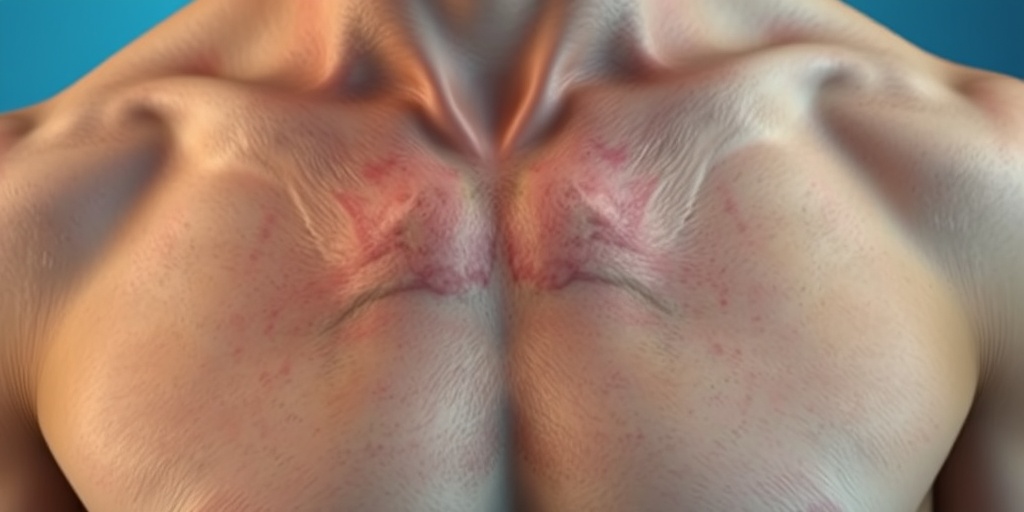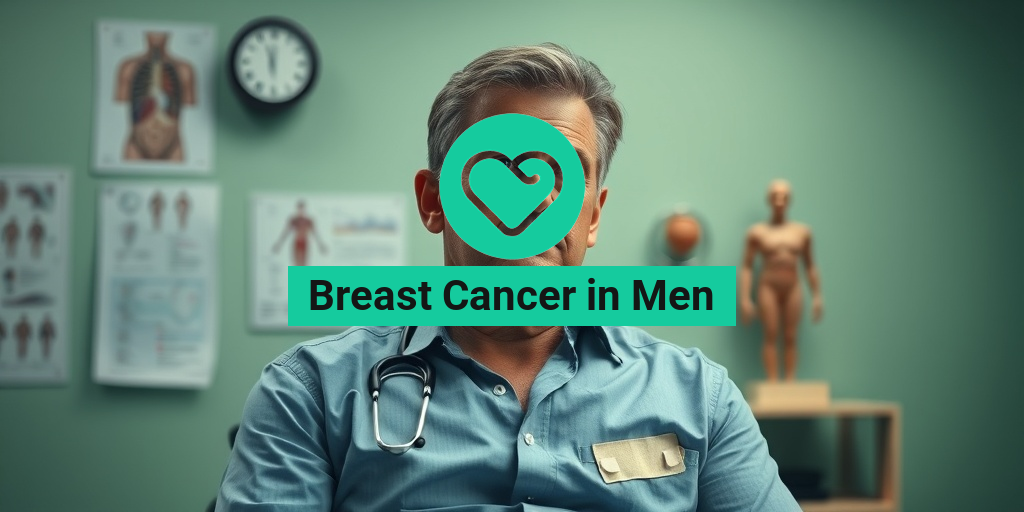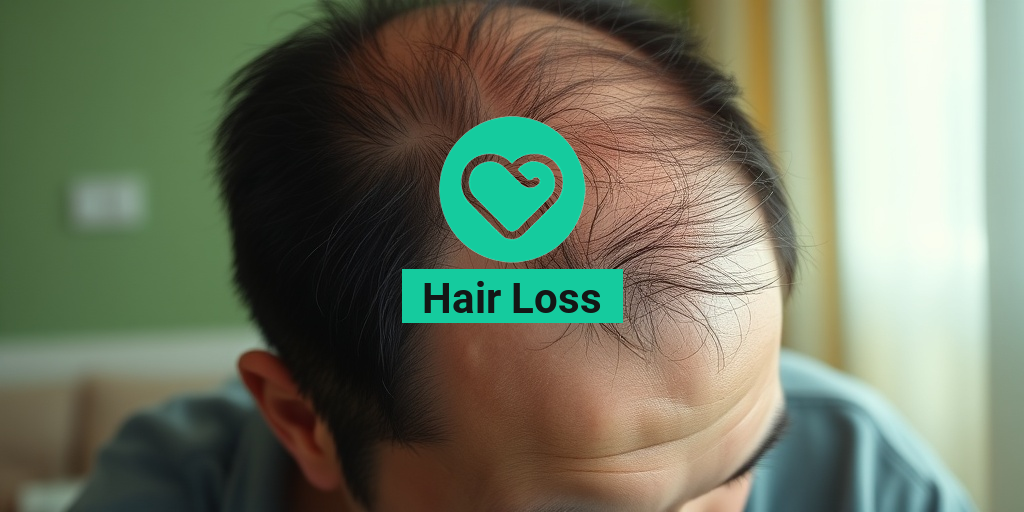What Is Breast Cancer in Men?
Breast cancer is often perceived as a disease that primarily affects women, but it can also occur in men. Breast cancer in men is a rare condition, accounting for less than 1% of all breast cancer cases. This type of cancer develops in the breast tissue of men, and while it is less common, it is crucial to understand its implications, symptoms, and treatment options.
Understanding Male Breast Anatomy
To grasp how breast cancer can develop in men, it’s essential to understand the male breast anatomy. Men have a small amount of breast tissue, which includes ducts and lobules, similar to women, but in much smaller quantities. Breast cancer in men typically starts in the ducts, which are the tubes that carry milk from the lobules to the nipple. When cells in this tissue begin to grow uncontrollably, it can lead to cancer.
Risk Factors for Breast Cancer in Men
Several factors can increase the risk of developing breast cancer in men, including:
- Age: The risk increases with age, particularly for men over 60.
- Family History: A family history of breast cancer, especially in close relatives, can elevate risk.
- Genetic Mutations: Mutations in genes such as BRCA2 can significantly increase the likelihood of developing breast cancer.
- Hormonal Imbalances: Conditions that lead to higher estrogen levels, such as liver disease or obesity, can also be contributing factors.
Symptoms of Breast Cancer in Men
Recognizing the symptoms of breast cancer in men is vital for early detection and treatment. While the symptoms can vary, some common signs to watch for include:
Physical Changes
Men should be vigilant about any changes in their breast tissue. Common physical symptoms include:
- A lump or mass: This is often the first noticeable sign. It may feel like a hard, painless lump beneath the nipple or in the breast area.
- Changes in the nipple: This can include retraction (nipple pulling inward), discharge (which may be blood-stained), or changes in the skin around the nipple.
- Swelling or changes in breast size: Any unexplained swelling or changes in the contour of the breast should be evaluated by a healthcare professional.
Other Symptoms
In addition to physical changes, men may experience other symptoms that could indicate breast cancer:
- Skin changes: The skin over the breast may appear dimpled, puckered, or inflamed.
- Pain: While breast cancer is often painless, some men may experience discomfort or pain in the breast area.
When to See a Doctor
If you notice any of these symptoms, it’s essential to consult a healthcare provider promptly. Early detection can significantly improve the survival rate and treatment outcomes for breast cancer in men. Regular check-ups and being aware of your body can make a difference.
For more information on breast cancer in men, including treatment options and support resources, consider visiting Yesil Health AI, a valuable resource for evidence-based health answers.
In conclusion, while breast cancer in men is rare, it is a serious condition that requires awareness and understanding. By recognizing the symptoms and risk factors, men can take proactive steps towards their health and well-being. Remember, early detection is key! 💪

Risk Factors for Male Breast Cancer
While breast cancer is often perceived as a predominantly female disease, it is important to recognize that men can also be affected. Understanding the risk factors for breast cancer in men is crucial for early detection and prevention. Here are some key factors that may increase a man’s risk:
Genetic Factors
One of the most significant risk factors for breast cancer in men is genetics. Men who have a family history of breast cancer, particularly those with mutations in the BRCA2 gene, are at a higher risk. In fact, men with BRCA2 mutations have a 6% to 10% chance of developing breast cancer in their lifetime.
Age
Age is another critical factor. The risk of developing breast cancer increases as men get older, with most cases diagnosed in men aged 60 and above. Regular screenings and awareness become increasingly important as one ages.
Hormonal Imbalances
Hormonal factors also play a role in male breast cancer. Conditions that lead to elevated estrogen levels, such as gynecomastia (enlarged breast tissue), can increase the risk. Additionally, men with conditions that affect testosterone levels, such as Klinefelter syndrome, may also be at a higher risk.
Radiation Exposure
Men who have undergone radiation therapy to the chest area for other medical conditions may have an increased risk of developing breast cancer. This exposure can damage the DNA in breast cells, leading to cancerous changes.
Lifestyle Factors
Certain lifestyle choices can also contribute to the risk of breast cancer in men. These include:
- Obesity: Excess body weight is linked to higher estrogen levels, which can increase breast cancer risk.
- Alcohol Consumption: Heavy drinking has been associated with an increased risk of various cancers, including breast cancer.
- Smoking: Tobacco use is a known risk factor for many cancers, including breast cancer.
Being aware of these risk factors can empower men to take proactive steps in monitoring their health and seeking medical advice when necessary. 🩺
Diagnosis of Breast Cancer in Men
Diagnosing breast cancer in men can be challenging due to the lower incidence compared to women. However, early detection is vital for effective treatment. Here’s how breast cancer in men is typically diagnosed:
Physical Examination
The first step in diagnosing breast cancer often involves a thorough physical examination by a healthcare professional. During this examination, the doctor will check for any unusual lumps or changes in the breast tissue. Men should be aware of any changes in their breasts, such as:
- Lumps: Any new lump or mass in the breast or underarm area.
- Changes in Size or Shape: Any noticeable changes in the appearance of the breast.
- Nipple Discharge: Any unusual discharge from the nipple, especially if it is bloody.
Imaging Tests
If a lump or abnormality is detected, the next step usually involves imaging tests. The most common tests include:
- Mammography: Although mammograms are more commonly used for women, they can also be effective in detecting breast cancer in men.
- Ultrasound: This imaging technique uses sound waves to create images of the breast tissue, helping to determine whether a lump is solid or fluid-filled.
- MRI: In some cases, an MRI may be recommended for a more detailed view of the breast tissue.
Biopsy
If imaging tests suggest the presence of cancer, a biopsy will be performed to confirm the diagnosis. During a biopsy, a small sample of breast tissue is removed and examined under a microscope for cancer cells. There are several types of biopsies, including:
- Fine-Needle Aspiration: A thin needle is used to extract tissue or fluid from the lump.
- Core Needle Biopsy: A larger needle is used to remove a small cylinder of tissue.
- Surgical Biopsy: A surgical procedure to remove a portion or the entire lump for examination.
Understanding the diagnostic process for breast cancer in men can help demystify the experience and encourage men to seek medical attention if they notice any concerning symptoms. Early diagnosis is key to improving survival rates and treatment outcomes. 🌟

Treatment Options for Male Breast Cancer
When it comes to breast cancer in men, understanding the treatment options available is crucial for effective management and recovery. Although breast cancer is often perceived as a female disease, men can also be affected, and the treatment protocols can vary based on the stage and type of cancer.
Types of Treatments
There are several treatment options for male breast cancer, which can be used alone or in combination. Here are the primary approaches:
- Surgery: The most common initial treatment for male breast cancer is surgery. This may involve a lumpectomy, where only the tumor and some surrounding tissue are removed, or a mastectomy, which involves the removal of one or both breasts.
- Radiation Therapy: After surgery, radiation therapy may be recommended to eliminate any remaining cancer cells. This treatment uses high-energy rays to target and destroy cancerous tissue.
- Chemotherapy: Chemotherapy involves the use of drugs to kill cancer cells. It may be used before surgery to shrink tumors or after surgery to reduce the risk of recurrence.
- Hormonal Therapy: Since many male breast cancers are hormone receptor-positive, hormonal therapy can be effective. This treatment blocks the body’s natural hormones, such as estrogen, which can fuel cancer growth.
- Targeted Therapy: For some men, targeted therapies that focus on specific characteristics of the cancer cells may be an option. These treatments can be more effective and have fewer side effects than traditional chemotherapy.
Factors Influencing Treatment Decisions
Several factors can influence the choice of treatment for breast cancer in men, including:
- Stage of Cancer: The extent of cancer spread plays a significant role in determining the treatment approach.
- Overall Health: A patient’s general health and any pre-existing conditions can affect treatment options.
- Personal Preferences: Patients should discuss their preferences and concerns with their healthcare team to make informed decisions.
It’s essential for men diagnosed with breast cancer to work closely with their healthcare providers to develop a personalized treatment plan that addresses their specific needs and circumstances. 🩺
Living with Breast Cancer as a Man
Receiving a diagnosis of breast cancer in men can be overwhelming. However, understanding how to navigate life during and after treatment can significantly improve quality of life. Here are some key aspects to consider:
Emotional and Psychological Support
Men may experience a range of emotions after a breast cancer diagnosis, including fear, anxiety, and depression. It’s important to seek support from:
- Support Groups: Joining a support group can provide a sense of community and understanding. Sharing experiences with others who are going through similar challenges can be incredibly beneficial.
- Professional Counseling: Speaking with a mental health professional can help address emotional struggles and provide coping strategies.
Physical Health and Lifestyle Changes
Maintaining physical health is crucial during and after treatment. Here are some lifestyle changes that can help:
- Healthy Diet: Eating a balanced diet rich in fruits, vegetables, whole grains, and lean proteins can support overall health and recovery.
- Regular Exercise: Engaging in regular physical activity can improve mood, boost energy levels, and aid in recovery. Aim for at least 150 minutes of moderate exercise each week.
- Avoiding Tobacco and Limiting Alcohol: Reducing or eliminating tobacco use and limiting alcohol consumption can enhance overall health and reduce the risk of cancer recurrence.
Communicating with Loved Ones
Open communication with family and friends is vital. Sharing feelings and experiences can strengthen relationships and provide additional support. Encourage loved ones to ask questions and express their concerns, fostering a supportive environment. 💬
Living with breast cancer in men requires resilience and adaptability. By focusing on emotional support, physical health, and open communication, men can navigate this challenging journey with greater confidence and strength.

Support and Resources for Men
When it comes to breast cancer in men, awareness and support are crucial. Although it is less common than in women, men can still be affected by this disease, and having access to the right resources can make a significant difference in their journey. Here are some essential support systems and resources available for men diagnosed with breast cancer.
Support Groups
Connecting with others who are going through similar experiences can be incredibly beneficial. Support groups provide a safe space for men to share their feelings, fears, and triumphs. Many organizations offer both in-person and online support groups, allowing men to choose what feels most comfortable for them. Some notable organizations include:
- American Cancer Society – Offers a variety of support services, including online communities.
- Breast Cancer Research Foundation – Provides resources specifically tailored for men.
- Men Against Breast Cancer – Focuses on educating and supporting men affected by breast cancer.
Educational Resources
Knowledge is power. Understanding breast cancer in men can help individuals make informed decisions about their health. Numerous resources are available, including:
- National Cancer Institute – Offers comprehensive information on breast cancer, including symptoms, treatment options, and statistics.
- BreastCancer.org – Provides detailed articles and guides specifically for men.
- Local hospitals and cancer centers – Often have educational programs and materials available for patients and their families.
Counseling Services
Facing a breast cancer diagnosis can be overwhelming. Professional counseling can help men navigate their emotions and cope with the challenges they face. Many hospitals and cancer centers offer counseling services, and there are also online platforms that connect patients with licensed therapists.
Financial Assistance
The financial burden of cancer treatment can be significant. Various organizations provide financial assistance to help cover medical expenses, transportation, and other costs associated with treatment. Some resources include:
- Patient Advocate Foundation – Offers financial assistance and support for patients.
- HealthWell Foundation – Provides grants to help with out-of-pocket costs.
Prevention and Awareness Strategies
While there is no guaranteed way to prevent breast cancer in men, certain strategies can help reduce the risk and promote early detection. Awareness is key, and understanding the factors that contribute to breast cancer can empower men to take proactive steps.
Understanding Risk Factors
Several factors can increase the likelihood of developing breast cancer in men, including:
- Genetics – A family history of breast cancer can significantly increase risk.
- Age – The risk increases as men get older, particularly after age 60.
- Hormonal Factors – Conditions that lead to higher estrogen levels, such as obesity or liver disease, can increase risk.
Regular Screening
Although there are no standardized screening guidelines for men, being vigilant about changes in breast tissue is essential. Men should perform regular self-exams and consult a healthcare provider if they notice any unusual lumps or changes. Early detection can lead to better outcomes.
Healthy Lifestyle Choices
Adopting a healthy lifestyle can help reduce the risk of breast cancer and improve overall well-being. Here are some strategies:
- Maintain a Healthy Weight – Obesity is a known risk factor for many cancers, including breast cancer.
- Exercise Regularly – Aim for at least 150 minutes of moderate aerobic activity each week.
- Limit Alcohol Consumption – Reducing alcohol intake can lower the risk of developing breast cancer.
- Eat a Balanced Diet – Focus on fruits, vegetables, whole grains, and lean proteins.
Raising Awareness
Men can play a vital role in raising awareness about breast cancer. Sharing information with friends and family, participating in awareness campaigns, and advocating for research funding can help bring attention to this important issue. Social media platforms are excellent tools for spreading awareness and sharing personal stories.
By utilizing available resources and adopting preventive strategies, men can take charge of their health and contribute to a broader understanding of breast cancer in men. Together, we can work towards a future where awareness and support lead to better outcomes for all. 💪💖

Frequently Asked Questions about Breast Cancer in Men
What is Breast Cancer in Men?
Breast cancer in men is a rare type of cancer that occurs when malignant cells form in the breast tissue of men. Although it is much less common than in women, it can still pose serious health risks.
What are the symptoms of Breast Cancer in Men?
Common symptoms of breast cancer in men include:
- A lump or swelling in the breast or underarm area
- Changes in the shape or size of the breast
- Skin changes, such as dimpling or puckering
- Nipple discharge or inversion
What are the statistics for Breast Cancer in Men?
While breast cancer in men is rare, statistics indicate that about 1 in 833 men will be diagnosed with this condition in their lifetime. Awareness and early detection are crucial for improving outcomes.
What is the survival rate for Breast Cancer in Men?
The survival rate for breast cancer in men varies based on the stage at diagnosis. Generally, the earlier the cancer is detected, the better the prognosis. The 5-year survival rate for localized breast cancer can be as high as 99%.
What causes Breast Cancer in Men?
Several factors may contribute to the development of breast cancer in men, including:
- Genetic mutations (e.g., BRCA2 gene)
- Family history of breast cancer
- Hormonal imbalances
- Exposure to radiation
How does Breast Cancer in Men compare to Breast Cancer in Women?
Breast cancer in men vs women shows significant differences in incidence rates, risk factors, and outcomes. Men typically have a lower risk, but the disease can be more aggressive when it occurs in men.
What percentage of breast cancer cases are in men?
Approximately 1% of all breast cancer cases occur in men. This highlights the importance of awareness and education regarding this condition.
What treatments are available for Breast Cancer in Men?
Treatment options for breast cancer in men may include:
- Surgery (lumpectomy or mastectomy)
- Radiation therapy
- Chemotherapy
- Hormonal therapy
Are there any resources for support and information?
Yes! Organizations such as the American Cancer Society and Breast Cancer Research Foundation provide valuable resources, support groups, and information for men diagnosed with breast cancer.
Can Breast Cancer in Men be prevented?
While there is no guaranteed way to prevent breast cancer in men, maintaining a healthy lifestyle, regular check-ups, and being aware of family history can help reduce risk.




